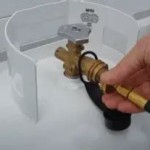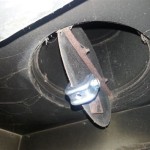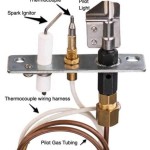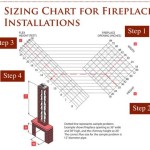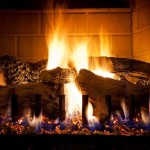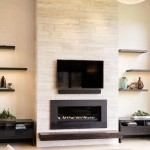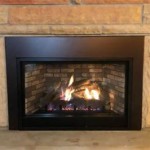Outdoor Patio Gas Fireplaces: A Guide to Warmth and Ambiance
An outdoor patio gas fireplace offers a compelling combination of functional heating and aesthetic appeal, transforming patios and decks into inviting gathering spaces year-round. Unlike traditional wood-burning fireplaces, gas-powered models provide instant ignition, consistent heat output, and the convenience of fuel control. Understanding the various types, features, and considerations involved in selecting and installing an outdoor gas fireplace is crucial for ensuring a safe, efficient, and visually pleasing addition to any outdoor living area.
The market for outdoor gas fireplaces encompasses a wide array of designs and functionalities, catering to diverse preferences and spatial constraints. From standalone units to built-in structures, the options are limitless, allowing homeowners to customize their outdoor spaces to reflect their individual styles and needs. This article aims to provide a comprehensive overview of outdoor patio gas fireplaces, covering key aspects such as types, features, installation considerations, and safety guidelines.
Types of Outdoor Patio Gas Fireplaces
The first step in selecting an outdoor gas fireplace involves understanding the different types available. Each type offers unique advantages and disadvantages in terms of aesthetics, installation complexity, and heating capacity. Key categories include freestanding gas fireplaces, gas fire pits, gas fire tables, and built-in gas fireplaces.
Freestanding Gas Fireplaces: These units are typically self-contained and portable, requiring minimal installation. They often feature a decorative enclosure, such as a metal cabinet or stone veneer, housing the gas burner and propane tank (if applicable). Freestanding fireplaces are ideal for homeowners seeking a flexible heating solution that can be easily moved or stored as needed. Their portability makes them a practical choice for renters or those who anticipate relocating in the future.
Gas Fire Pits: Gas fire pits offer a more communal and interactive experience, typically featuring a circular or square burner surrounded by decorative rocks, glass beads, or other fire media. They are available in various sizes and styles, from small tabletop models to large, in-ground installations. Fire pits are often used as a focal point for outdoor seating areas, encouraging conversation and creating a relaxed atmosphere. Fuel options include propane and natural gas.
Gas Fire Tables: Combining the functionality of a coffee table with the ambiance of a fireplace, gas fire tables offer a practical and stylish addition to outdoor living spaces. These tables typically feature a recessed burner in the center, surrounded by a flat surface for holding drinks, snacks, or other items. They are available in a range of materials, including wood, metal, and stone, and can be easily integrated into existing patio furniture arrangements. Gas fire tables are particularly well-suited for smaller patios or decks where space is limited.
Built-in Gas Fireplaces: For homeowners seeking a permanent and customized outdoor heating solution, built-in gas fireplaces offer unparalleled design flexibility. These fireplaces are typically integrated into an existing structure, such as an outdoor kitchen or retaining wall, and can be finished with a variety of materials to match the surrounding landscape. Built-in fireplaces require professional installation and are typically fueled by natural gas, providing a consistent and reliable heat source. The customization options allow for creating a truly unique outdoor focal point that complements the architectural style of the home.
Key Features and Considerations
Beyond the basic types, several key features and considerations should influence the selection of an outdoor patio gas fireplace. These include heating capacity, fuel type, ignition system, safety features, and material durability. Thoroughly evaluating these factors will ensure that the chosen fireplace meets the specific needs and preferences of the user.
Heating Capacity: The heating capacity of a gas fireplace is measured in British Thermal Units (BTUs). A higher BTU rating indicates a greater ability to heat a larger area. The appropriate BTU rating will depend on the size of the patio, the climate, and the desired level of warmth. For smaller patios or mild climates, a lower BTU rating may suffice. Conversely, larger patios or colder climates will require a higher BTU rating to provide adequate heating. Consider the typical usage patterns and the number of people who will typically be gathered around the fireplace when determining the necessary heating capacity.
Fuel Type: Outdoor gas fireplaces can be fueled by either propane or natural gas. Propane fireplaces use a portable propane tank, offering greater flexibility in terms of placement. However, the need to regularly refill the tank can be a drawback for some users. Natural gas fireplaces, on the other hand, are connected to a permanent natural gas line, eliminating the need for tank refills. However, installation requires professional plumbing and may be more expensive initially. The choice between propane and natural gas will depend on factors such as fuel availability, installation costs, and personal preferences.
Ignition System: The ignition system of a gas fireplace determines how easily and reliably it can be started. Common ignition systems include match-lit, push-button, and electronic ignition. Match-lit systems are the simplest and most affordable, requiring the user to manually light the burner with a match or lighter. Push-button systems offer greater convenience, using a piezoelectric igniter to create a spark. Electronic ignition systems are the most sophisticated, using a battery-powered or electrically-powered spark to ignite the burner. Electronic ignition systems often include remote control functionality and safety features such as automatic shut-off in case of flame failure.
Safety Features: Safety is a paramount consideration when selecting and installing an outdoor gas fireplace. Look for models that include safety features such as flame failure detection, which automatically shuts off the gas supply if the flame is extinguished. Also, ensure that the fireplace is certified by a recognized testing laboratory, such as UL or CSA, to meet safety standards. Proper ventilation is also crucial to prevent the buildup of carbon monoxide. Always follow the manufacturer's instructions for installation and operation, and never use the fireplace indoors or in enclosed spaces.
Material Durability: Outdoor gas fireplaces are exposed to the elements, so it is essential to choose models constructed from durable materials that can withstand weather conditions. Common materials include stainless steel, powder-coated aluminum, and stone veneer. Stainless steel is resistant to rust and corrosion, making it a popular choice for burners and other exposed components. Powder-coated aluminum provides a durable and weather-resistant finish for enclosures. Stone veneer adds a touch of elegance and natural beauty while also providing insulation and protection. Consider the local climate and choose materials that are appropriate for the specific environmental conditions.
Installation and Safety Guidelines
Proper installation and adherence to safety guidelines are critical for ensuring the safe and efficient operation of an outdoor patio gas fireplace. Whether installing a freestanding unit or a built-in model, it is essential to follow the manufacturer's instructions and local building codes. In many cases, professional installation may be required, particularly for natural gas connections and structural modifications.
Clearance Requirements: Maintaining adequate clearance around the fireplace is crucial to prevent fire hazards. The manufacturer's instructions will specify the minimum clearance distances from combustible materials, such as walls, furniture, and overhanging structures. These clearance requirements must be strictly adhered to to ensure that the surrounding area does not overheat and ignite. Pay particular attention to the clearance above the fireplace, as rising heat can damage ceilings or other overhead structures.
Gas Line Connections: Connecting a gas fireplace to a natural gas line requires specialized skills and knowledge. It is essential to hire a qualified gas technician to ensure that the connection is properly installed and leak-tested. Improper gas line connections can result in gas leaks, which can pose a serious fire or explosion hazard. The gas technician will also ensure that the gas line is properly sized to provide adequate gas flow to the fireplace. For propane fireplaces, ensure that the propane tank is properly connected and secured.
Ventilation: Outdoor gas fireplaces require adequate ventilation to prevent the buildup of carbon monoxide. While outdoor spaces are typically well-ventilated, certain conditions, such as enclosed patios or breezeways, may require additional ventilation. Ensure that the fireplace is located in an area with sufficient airflow to dissipate combustion gases. Never use an outdoor gas fireplace indoors or in enclosed spaces. Carbon monoxide is a colorless, odorless gas that can be deadly if inhaled.
Regular Maintenance: Regular maintenance is essential for ensuring the safe and efficient operation of an outdoor gas fireplace. This includes cleaning the burner, checking for gas leaks, and inspecting the igniter. The burner should be cleaned regularly to remove any debris or soot that may accumulate and affect its performance. Gas lines should be inspected periodically for leaks using a soap and water solution. The igniter should be tested to ensure that it is functioning properly. Refer to the manufacturer's instructions for specific maintenance recommendations.
Emergency Procedures: Familiarize yourself with the emergency procedures for your gas fireplace. This includes knowing how to shut off the gas supply in case of a leak or other emergency. Keep a fire extinguisher nearby and know how to use it. If you smell gas, immediately evacuate the area and call the fire department or gas company. Never attempt to repair a gas leak yourself.
By carefully considering the types of outdoor patio gas fireplaces available, understanding key features and considerations, and adhering to proper installation and safety guidelines, homeowners can create a warm, inviting, and safe outdoor living space that extends the enjoyment of their homes throughout the year.

Napoleon Outdoor Fireplace 42 Riverside Clean Face Gss42cfn Hvacdirect Com

Gas Fireplaces For Outdoor Entertainment Perfect Patios

Outdoor Fireplace Kits Stonewood S Cape Cod Ma Nh Ct

36 Inch Vesper Outdoor Gas Fireplace Fine S

36 Outdoor Gas Fireplace Electronic Ignition Fine S
.aspx?strip=all)
5 Benefits Of Outdoor Fireplaces Regency

How To Choose An Outdoor Fireplace The Home Depot

Outdoor Gas Fireplaces Landscaping Network

Napoleon Riverside 42 Clean Face Outdoor Gas Fireplace Hearth Stove Patio

Outdoor Fireplace Experts The 1 Dealer For Fireplaces

